Overview:
This article is a step by step guide to creating ArcGIS Online applications.
Ensure you have signed into an ArcGIS Online account and have permission to publish content.
Step 1, Create the Map:
The core of any GIS application is a map. Before making an app/dashboard, you will need to prepare a map. There are several ways to do this.
- The most common way, via a service.
- Make a map with Ohio State Services. This will leverage OSU Servers to prevent any data from being stored in ArcGIS Online.
- There are multiple types of GIS Service, the most common two are map services and feature services.
- Map Services display your data and allow access to it visually
- Feature services do everything a map service does, but also allow edit access to the data.
- Because feature services can have data edited, all feature services need accessed through a proxy item in ArcGIS Online. All feature services should be restricted to a minimum of "Organization Sharing"
- The less common way, via hosted data.
- Make a map by publishing data to ArcGIS Online. This leveraged ArcGIS Online cloud storage as a convenience, but at a cost.
- The rare way, with no data.
- It is possible that a map may be irrelevant or no additional data may be needed because a map already exists for you. You can rarely skip the creation of a map.
Step 2, Access the Template:
It is time to find a template and make your app.
The main header contains an application menu. Expand it and browse for "Experience Builder"
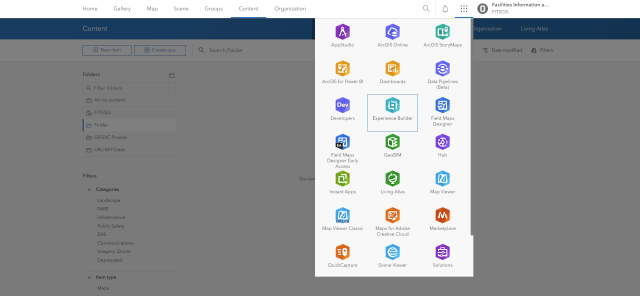
- Once open, experience builder will display any existing applications you have.
- Click "Create New" and you are prompted to select a template.
Change tabs to "My Organization" and select from the templates shared with you.
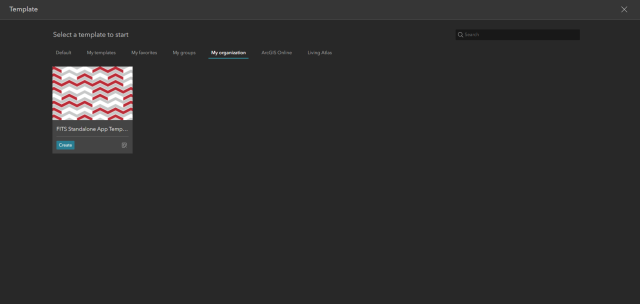
- Open the template to begin a new app.
Step 3, Add the Map:
It is time to combine your map into this new app,
- Add your map to the app by selecting the map frame in the middle of the application.
The pane on the right will change to allow you to add a map source.
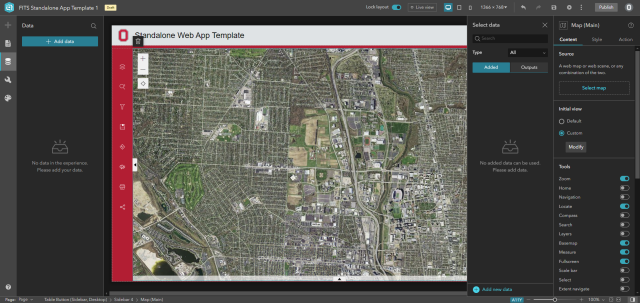
- Click "Select a Map", then click "Add new data".
- Browse your content for the relevant map.
Step 4, Alter the Header, Help Splash, and Save:
It is time to alter the text in the application. This will vary between device views (mobile, tablet, and desktop).
- Make a title that matches the map name.
- This will need added to the desktop view only.
To complete the help section, add a summary.
- To do this change your selection to the "page" catalog and window section. You will see fixed windows available to edit.
- Edits will need made to both the desktop help splash and mobile help splash.
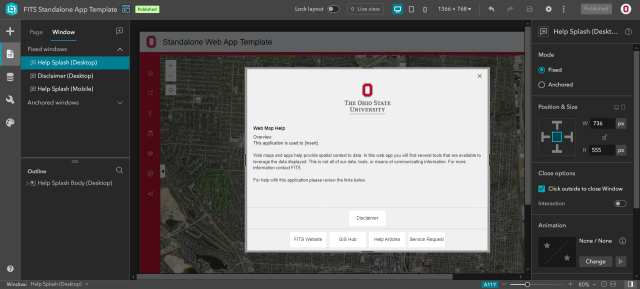
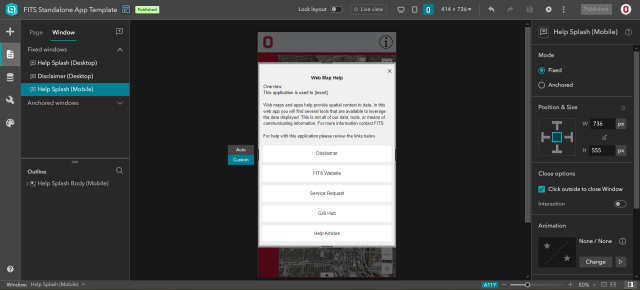
- To do this change your selection to the "page" catalog and window section. You will see fixed windows available to edit.
- Save the application after your text edits have been made.
- Name it the same thing as your app title and map name.
Step 5, Configure the Widgets:
Widgets do not automatically link or set up when a map is added. Review your needs.
- Click each widget and make sure it is linked to any relevant data.
- There are some widgets which need to be pointed to content to function, such as a layer widget.
Some widgets will not be needed and can be deleted from the template.
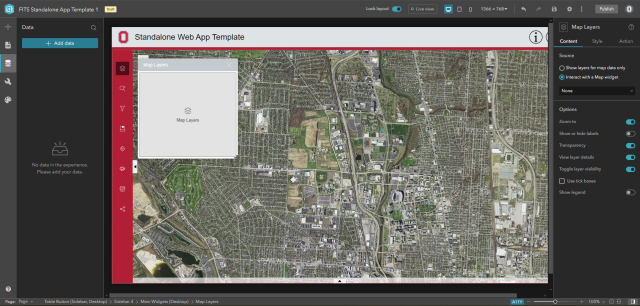
- On the right side of the screen you will need to configure the content of the widget. The layers widget needs to select a "source". In the image this example has the value of "none" for source.
- Save the app as you alter the widgets to ensure your work is kept.
Step 6, Test to Verify:
Everyone forgets and makes mistakes, remember to review your work.
- Check the app's layout in many resolutions.
- Also change the app to "Tablet" and "Mobile" views as needed.
- .....
A list of content to verify in the app template:
- Header
- Title
- Info Splash
- Map Frame
- Widgets
- 1
- 2
- 3
- 4
- ...
- Tablet and Mobile (repeat the above)
Step 7, Publish and Configure Sharing:
- Press the publish button once the app is ready for others to view.
- By default all apps should be set to org only
- Any publicly shared apps should be reviewed by one other person for added quality assurance.
- Review the item in your ArcGIS Online contents to add additional information.
- A detailed description, summary, thumbnail, additional tags, etc.